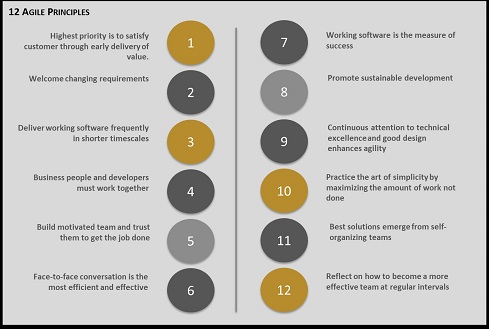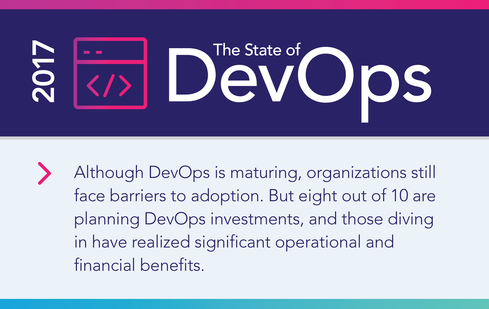Top 5 Principles in Becoming ‘Agile’ During Digital Transformation

![]()
![]()
![]()





![]()




![]()
![]()
![]()
![]()
![]()
![]()
![]()
![]()
![]()
![]()
 12/13/2018
12/13/2018
07:00 AM
 0 comments
0 comments
Comment Now

“We want to take an Agile approach to delivering…” It’s a phrase heard frequently from organizations as they take on complex digital transformation implementations. Agile is a popular term that gets project teams excited. There’s excitement in the promise of a speedy delivery and return on investment, one that allows flexibility in scope, requirements and discovery. Unfortunately, all too often, that excitement fades quickly and is replaced Why Agile?
According to the Agile Practice Guide, developed jointly When an Agile project fails to deliver on promises, and benefits of the delivery framework are not realized, organization leaders can be quick to characterize Agile as a flawed idea. In many cases, after closer review, the cause of failed Agile projects is not the idea, but rather the execution. In fact, when Agile projects are executed with a solid understanding of Agile principles the results can be realized, as advertised.
Understanding Agile principles
Many organizations have grown familiar with the concept of Agile projects, which is certainly a good starting point for moving in the direction of project delivery. However, in order to take the next step of realizing the promises of successful Agile endeavors, one needs to understand the principles that support this framework.
The following outlines the “12 Agile Principles”. These are commonly understood within the practicing Agile community. Organizations are well-served to ensure project teams are knowledgeable in these principles and adhere to them when determining how to tailor an Agile approach to meet their projects’ business objectives.

(Source: The Agile Alliance)
Witnessing trials and triumphs of small- and large-scale Agile projects, below are five key principles that organizations should give close consideration to in order to realize the promise of successful Agile execution. Related “Do’s and Don’ts” are offered based on practical experience.
Highest priority is to satisfy the customer through early delivery of value.
Do’s
- Maintain focus on customer business objectives and what products/features drive value
- Prioritize efforts on what can bring the most value the soonest
Don’ts
- Devote time to delivering complex project artifacts that could be better spent delivering valued functionality
- Back-load delivery of high-value functionality for fear of complexity/risk; take them on early
Working software is the measure of success.
Do’s
- Measure a project’s productivity based on fully functioning products (you know it’s done, when you see it working)
- Focus efforts on activities that demonstrate working software and/or remove roadblocks in the way of its delivery
Don’ts
- Spend time and effort measure partial completion (e.g., % completion of in-progress items)
- Hold traditional status meetings. This can lead to the infamous “we’re almost complete”
Welcome changing requirements.
Do’s
- Recognize requirements become clearer when solutions are demonstrated against use cases
- Understand marketplace developments can be addressed Don’ts
- Reject value-added changes simply because a pre-dated milestone has passed
- Introduce unnecessary bureaucracy as a deterrent to change
- Accept changes without challenging value proposition (in a simple manner)
Practice the art of simplicity.
Do’s
- Accept simple solutions that satisfy business needs
- Place value on what has demonstrated to work well enough
- Remember that a simple solution can be enhanced later
Don’ts
- Delay demonstrating work functionality for the sake of perfecting it
- Fill idle time Build motivated teams and trust them to get the job done.
Do’s
- Create simple status tools (easy to interpret and update) and make them publicly visible. Allow teams to spend more time delivering than report
- Empower project team to make delivery decisions based on a trusted understanding of business-valued objectives
- Support a self-organized team that knows what it takes to deliver Don’ts
- Attempt to micro-manage

James Boyd is a director in Opportune’s Process and Technology practice and has 19 years of process and technology consulting experience, including more than 15 years of project/program management experience. He is experienced in leading system integration and technical transition efforts leveraging expertise in technology and business processes, as well as proven skills in people and stakeholder management. Prior to joining Opportune, James was a certified Technology Architect as a member of Accenture’s Energy practice, servicing clients as an expert system integration manager with extensive package and custom software delivery and product lifecycle knowledge. James is a certified Project Manager (PMP) and Agile Certified Practitioner (PMI-ACP).

‘);
}
‘);
}Fact vs. Fiction: Mobile Support
NotPetya: One Year Later
Cybersecurity Checklist for SaaS Applications
Mitigating False-Positives to Improve Software Publishing
Investigating Malware Threats Within your Network
–>’);
}


Fact vs. Fiction: Mobile SupportThe Year in Security 2018
TitaniumCloud File Intelligence vs. VirusTotal
Know Your Unknowns With a Master IP Address List Audit
The IT Pro’s Guide to DIY Antivirus Testing
–>


 Reports
Reports

 Infographics
Infographics

2018 State of the Cloud
Cloud adoption is growing, but how are organizations taking advantage of it? Interop ITX and InformationWeek surveyed technology decision-makers to find out, read this report to discover what they had to say!


Infographic: The State of DevOps in 2017
Is DevOps helping organizations reduce costs and time-to-market for software releases? What’s getting in the way of DevOps adoption? Find out in this InformationWeek and Interop ITX infographic on the state of DevOps in 2017.


 Live Events
Live Events

 Webinars
Webinars


More UBM Tech
Live Events


 0 Comments
0 Comments
 0 Comments
0 Comments
 0 Comments
0 Comments
 0 Comments
0 Comments
 0 Comments
0 Comments
 0 Comments
0 Comments
 0 Comments
0 Comments
 0 Comments
0 Comments
 0 Comments
0 Comments
 0 Comments
0 Comments
 0 Comments
0 Comments
 0 Comments
0 Comments

Enterprise Software Options: Legacy vs. CloudInformationWeek’s December Trend Report helps IT leaders rethink their enterprise software systems and consider whether cloud-based options like SaaS may better serve their needs.



Top 10 Tech Predictions for 2019


9 Reasons Why Women Leave Tech Jobs


Key Characteristics of Digitally Mature Organizations



















- [close this box]
 Tweet This
Tweet This
- [close this box]

- Attempt to micro-manage

